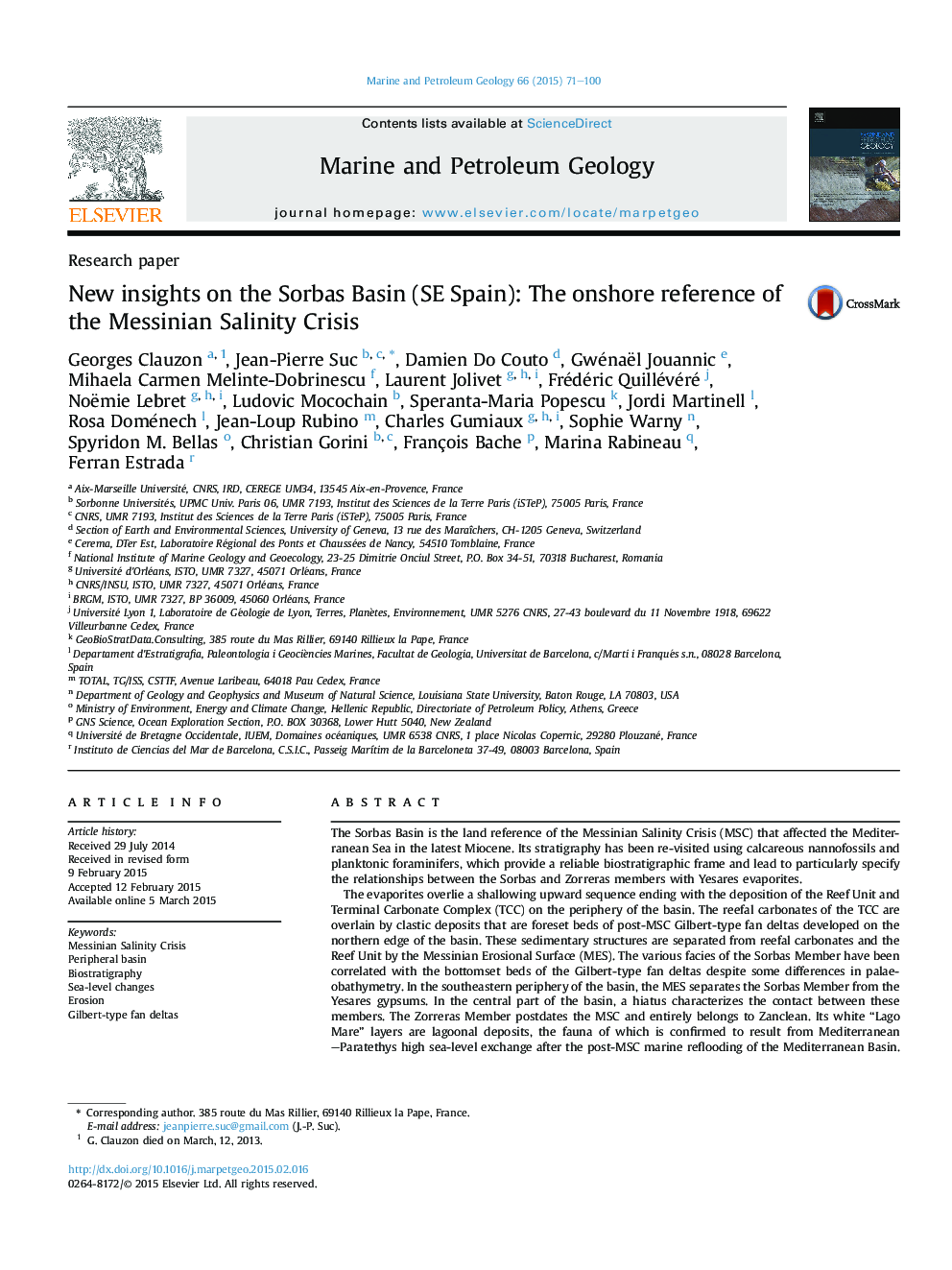| کد مقاله | کد نشریه | سال انتشار | مقاله انگلیسی | نسخه تمام متن |
|---|---|---|---|---|
| 4695516 | 1351612 | 2015 | 30 صفحه PDF | دانلود رایگان |

• The Sorbas Basin documents the Messinian Salinity Crisis (MSC) two-step scenario.
• Subaerial erosion significantly affected the Yesares gypsums during the MSC peak.
• The Sorbas Member marks the post-MSC marine reflooding of the Mediterranean Basin.
• The Terminal Carbonate Complex must be restricted to carbonated constructions.
• The Zorreras Member, which includes the Lago Mare facies, is Zanclean in age.
The Sorbas Basin is the land reference of the Messinian Salinity Crisis (MSC) that affected the Mediterranean Sea in the latest Miocene. Its stratigraphy has been re-visited using calcareous nannofossils and planktonic foraminifers, which provide a reliable biostratigraphic frame and lead to particularly specify the relationships between the Sorbas and Zorreras members with Yesares evaporites.The evaporites overlie a shallowing upward sequence ending with the deposition of the Reef Unit and Terminal Carbonate Complex (TCC) on the periphery of the basin. The reefal carbonates of the TCC are overlain by clastic deposits that are foreset beds of post-MSC Gilbert-type fan deltas developed on the northern edge of the basin. These sedimentary structures are separated from reefal carbonates and the Reef Unit by the Messinian Erosional Surface (MES). The various facies of the Sorbas Member have been correlated with the bottomset beds of the Gilbert-type fan deltas despite some differences in palaeobathymetry. In the southeastern periphery of the basin, the MES separates the Sorbas Member from the Yesares gypsums. In the central part of the basin, a hiatus characterizes the contact between these members. The Zorreras Member postdates the MSC and entirely belongs to Zanclean. Its white “Lago Mare” layers are lagoonal deposits, the fauna of which is confirmed to result from Mediterranean–Paratethys high sea-level exchange after the post-MSC marine reflooding of the Mediterranean Basin.This study allows to re-assert the two-step scenario of the MSC (Clauzon et al., 1996) with the following events:- at 5.971–5.600 Ma, minor sea-level fall resulting in the desiccation of this peripheral basin with secondary fluctuations;- at 5.600–5.460 Ma, significant subaerial erosion (or lack of sedimentation) caused by the almost complete desiccation of the Mediterranean Sea;- instantaneous marine reflooding, accepted at 5.460 Ma, followed by continuing sea-level rise.
Journal: Marine and Petroleum Geology - Volume 66, Part 1, September 2015, Pages 71–100